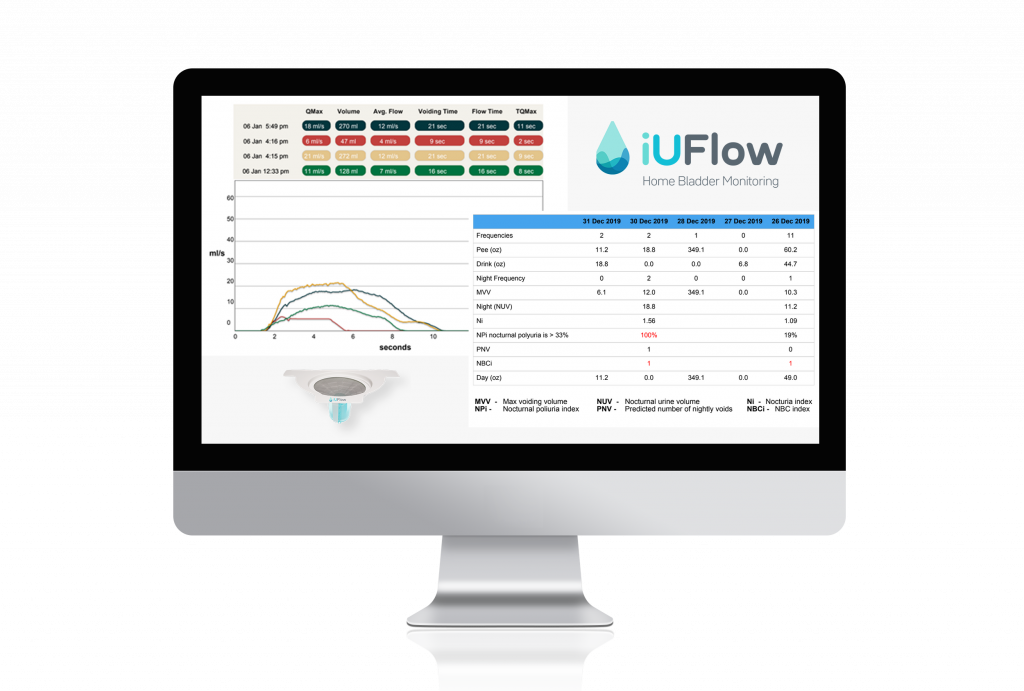A comparison of Do-It-Yourself uroflowmetry (DIY), e.g. an in-home uroflometry (uroflow), with traditional, in-clinic uroflowmetry.
Mombelli et al presented a study that compares home uroflowmetry to the traditional commonly used uroflow.
The assessment of urine flow rate dates back to the 1950s…
There is nothing new in Lower urinary tract symptoms, prostate volume and uroflow.
The title of the study: Free uroflowmetry versus “Do-It-Yourself” uroflowmetry in the assessment of patients with lower urinary tract symptoms.
To sum it up: together with the international Prostatic Symptom Score (IPSS), home uroflow is a good estimate of the results of uroflowmetry. In other words, it enables unnecessary hospital investigations to be avoided.
Read the full study at PubMed
How long does a uroflow take?
The procedure usually takes about half an hour. According to the availability in your region, the test is typically performed in a hospital or a physician’s office. Your doctor may ask you to repeat the process in case the results are not valid. In other words, you’ll have to drink until you fill your bladder, then wait a while and measure again.
Can a stopwatch and a liquid container replace the conventional uroflow machine? Mombelli et al published the paper in 2014, a few years have passed, and it seems that urologists still prefer precise data. Uroflow is no longer limited to only the hospitals and clinics that have the technology.
The stopwatch, DIY, method provides a very general idea of the bladder state. However, home uroflow is a better way to obtain (multiple) flow readings. To clarify, it has the potential to combat problems inherent to clinic-based flow tests.
Likewise, there are several studies that show the use of low cost home devices to measure flow rate. But there is no need to compromise where it comes to health or test accuracy. With iUFlow you can measure and monitor your urine flow at home and turn it into valuable data. The data helps doctors to easily diagnose and treat urinary tract conditions. The device is lightweight and portable. There is no need to touch or write down urination volume.
A flow test calculates the speed of urine flow over time.
Just place iUFlow device on the toilet bowl under the seat, make sure it’s stable with all 3 flaps touching the bowl. And that’s it. The next step is urinate into it and flush. It will quickly and accurately measure the flow and total volume.
The results will sync into your iPhone or Android. On your smartphone, turn on Bluetooth and start iUFlow app. In addition, your doctor can view the flow rate outcomes on their computer screen.

By viewing the dashboard, your doctor can now assess your treatment with real-time data and get constant feedback from your bladder. And to even monitor or determine the need for treatment. A great use of this valuable data is by comparison. For example, before and after drug like alpha blocker for instance in the case of BPH. Urine Flow Rate Detector or Home Uroflow can be valuable as well for the monitoring of other situations. For example, OAB, USD.
Further reading, Maximum Urine Flow Rate of Less than 15ml/Sec…
What is the best Do-It-Yourself uroflowmetry? Some benefits of flow test @Home:
- Use it anywhere, not just hospitals or clinics
- Accuracy
- Patients tested from home, saving travel time and expense
- Paperless
- Healthcare provider gets results directly

Is low Qmax value a sign of obstruction? Why is my urine stream weaker? do I need a bladder app?
How to get the test results of iUFlow? Does it measure volume and Qmax?
Both Volume and Qmax are recorded, of course. iUFlow syncs the result to iUFlow Voiding Diary app (free and on both Android® and Apple®). And the same for iUFlow dashboard. So, your physician can interpret the results even at the same moment that the measurement takes place.
Contact us for more information. Or with any question about interpretation of your test results.
Learn more about iUFlow












